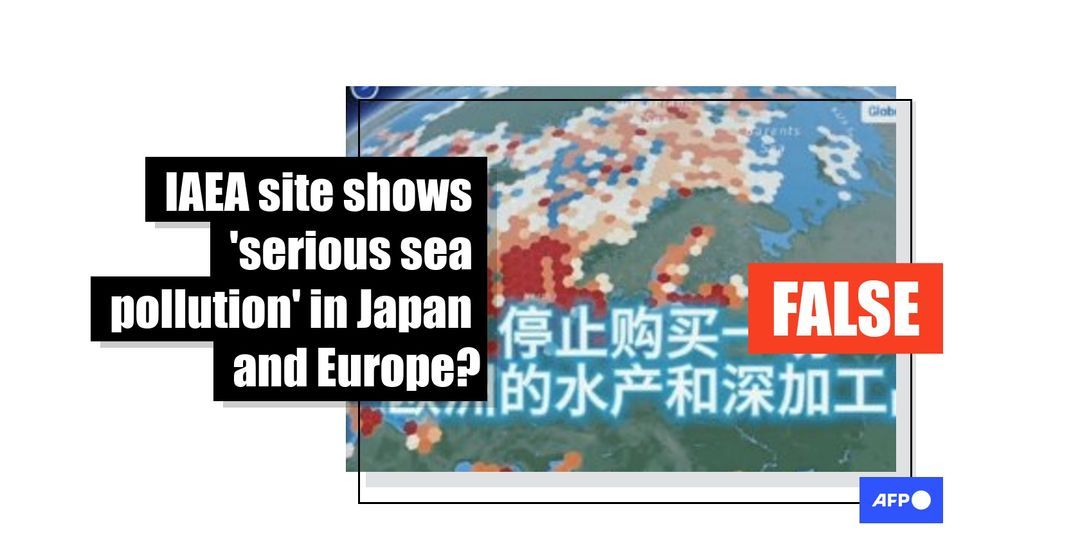
A video has been shared hundreds of times with a false claim that a database by the UN nuclear watchdog IAEA shows “serious radioactive contamination” in waters around Japan and Europe. However, a spokesperson for the agency told AFP the database in fact shows the number of tests conducted in waters around the world and does not show contamination levels. An expert has also said assessment reports from the United Kingdom and France show seafood products from European waters are safe for consumption.
“Stop buying all aquatic and processed products from Europe,” read Chinese text overlaid on a TikTok video uploaded on December 12, 2023.
“The aquatic products of Europe are completely and utterly inedible,” a man can be heard saying.
“There are tests for nuclear contamination in waters around the world,” the man goes on to say. “The sea pollution around the Japanese islands is very serious.”
The video shows a map from the IAEA Marine Radioactivity Information System (MARIS), which has a patch of red hexagons in waters around Japan.
The clip then scrolls to the western hemisphere where a similar patch of red hexagons can be seen in waters around Europe, suggesting that the seas around Europe suffer from a “contamination” similar to waters around Japan.

In August 2023, Japan began releasing into the Pacific Ocean the equivalent of 540 Olympic swimming pools’ worth of treated wastewater used to cool reactors that went into meltdown after a 2011 deadly tsunami.
Tokyo insists that the water is harmless — a view backed by the IAEA — but China and Russia have banned Japanese seafood imports.
The video, which has been viewed over 120,000 times, was also shared with similar claims elsewhere on TikTok here, here and here and its Chinese equivalent Douyin here, here and here.
But a spokesperson for the IAEA told AFP there are “several serious misunderstandings and/or misconceptions” in the video as the map does not show radiation contamination.
A marine expert has also told AFP that marine monitoring reports show that seafood from Europe is safe.
Misused graphic
Sinead Harvey, the IAEA’s press and public information officer, told AFP that the map shows the number of samples indicating the data available for each location, not levels of radioactive substances.
“In this case, a hexagon that is coloured red simply means that more samples have been collected and shared with the IAEA for inclusion in MARIS in this area than a hexagon that is coloured orange,” she said on January 9, 2024.
“Therefore, areas such as Europe for which a lot of data is available in MARIS are indicated by a higher value.”
Jim Smith, a professor of environmental science at the University of Portsmouth, called the claim “ridiculous fake news” (archived link).
“There are many measurements around Fukushima and also in Western Europe — radioactivity in seawater has been intensively studied there,” Smith told AFP on January 8. “Just because there are lots of measurements in no way means that the waters are dangerous.”
He also pointed out that marine assessment reports from both the UK and France showed that seafood in Europe is safe (archived links here and here).
The video shared in the false posts also displayed data available from 1957 up to the present, not just samples collected in recent years.
The site shows the latest uploaded datasets were from 2021, which predate Japan’s release of the treated wastewater from the Fukushima reactor, as seen in the screengrab below (archived link).

Images of the water around Japan and Western Europe from the interactive map on MARIS matched the ones in the misleading video.
Below are screenshot comparisons of the images taken from the false TikTok video (left) and from the MARIS database (right):

AFP has debunked misinformation about the Fukushima wastewater release here and here.
